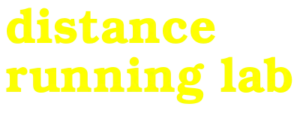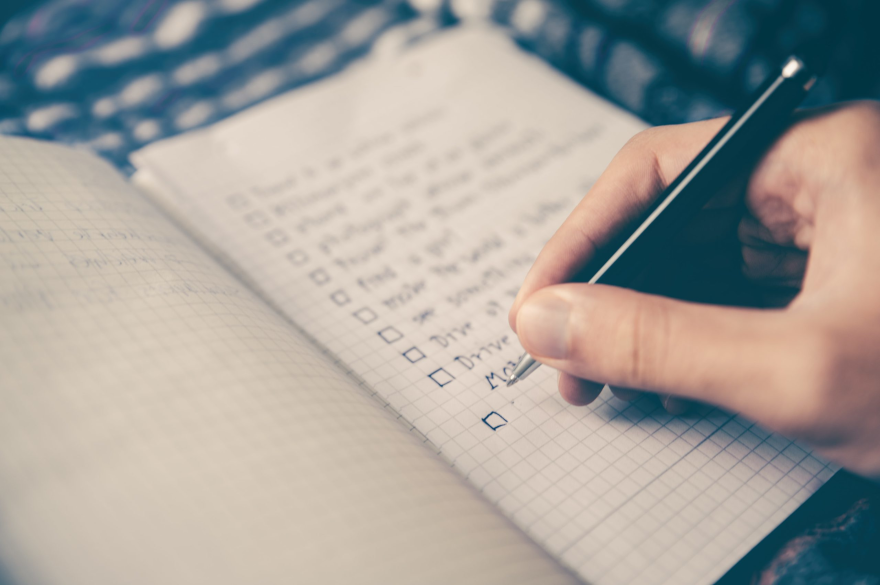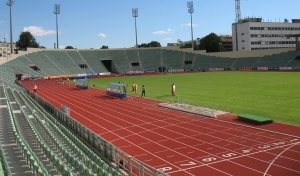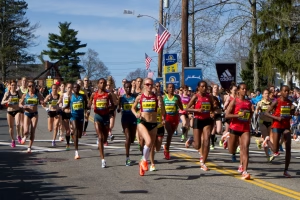A time of transition
After the big race, it is common to experience one or more from a wide range of intense emotions. Maybe you experienced For you, it may be the ecstasy of an achieved goal, perhaps followed by a difficult low as you ponder, “what next?” Or, perhaps your season was so mediocre that your mindset ambiguously wavers between uninterested, mildly motivated, and slightly curious about what might be a good next goal. Or, it might be that you had a difficult time, full of painful reminders of your own imperfections, leaving you questioning whether you would rather find another way of life.
Whatever color you are wearing during this time, running is still meaningful to you, isn’t it? And the way forward is awesome.
This path is part art, part science.
Here are 5 critical aspects to address before setting out on “day 1”.
1. Get your psychology in order
The challenge with a clean slate is that you eventually need to fill it with something good. It can be bewildering if you don’t exactly know what to do or how to start. My suggestion is to take a break for a week or two and spend time in a variety of novel and stimulating activities. You will probably need to keep moving (because you are a physical person), so this is the time to try those other sports – scuba diving, sailing, horseback riding, skiing, table tennis. Have fun using your body in a different way.
What does this have to do with psychology? The physical change promotes a mental break, and it exposes your mind to new possibilities and primes you for creativity. This helps in the process of eventually arriving at your focused goal. In the end, you may simply take the next logical step that follows your previous season – same race distances, only a bit faster. Or, you may decide to go shorter or longer. You might change settings between track, road, trail, or mountain. You might find a new hero or discover a new challenge to pursue. In addition to knowing what you want to do, I also want you to know what you don’t want to do.
Next, I want you to consider adding two mental skills to your athletic repertoire: relaxation and visualization.
Relaxation
Relaxation is often confused with meditation. These days, meditation, arising from the influence of Eastern practices has become quite popular. This meditation is aimed at clearing the mind. Perhaps this has a place, but it probably won’t assist in the purposeful, goal-directed approach necessary to move you from the off-season to many months of expert athletic execution. Thus, I suggest a form of autogenic relaxation designed to help you learn to control your body towards a state of maximum relaxation (both mental and physical) and perhaps healing and readiness. Autogenic means that the relaxation comes from within. This is a highly-refined skill of making your thoughts and intentions directly lead to specific body outcomes.
You can listen to a guided program produced by Terry Orlick, a former sport psychology professor at the University of Ottawa in Canada.
Most training plans speak very little of programming in terms of psychological training. The added benefit is that this probably enhances your ability to engage in non-athletic work as well in terms of focus, creativity, etc.
The other goal here is to practice these relaxation skills early in your season so that when the big race arrives and you are nervous and stressed, you can go to your relaxation methods to deal with that. Or if there is a distracting event at home or work that potentially would interfere with your ability to compete well, you are equally ready to deal with that in stride using your sport psychology skills. If you have ever spent time learning how to excel in business, it won’t take long to discover that people who pursue a high-performance business mindset emphasize the psychological aspects of readiness and performance very similar to the way professional athletes do. testing
Autogenic relaxation involves positive suggestions towards relaxing your breathing and then moves on to focusing on individual muscles to be contracted and relaxed. The contraction shows you what to avoid (i.e., tension) and relaxation is simply the opposite. The point here is to demonstrate how you (your mind) is able to control your body and put in an ideal state.
Visualization
The other skill I would like you to practice is that of visualization. Actually, within an athletic context, the term visualization shouldn’t just include visual, but all also the senses of audio and touch. Perhaps mental simulation is a better term, but we’ll stick with visualization for now.
You can do this more frequently as your goal event approaches. With this technique, you simply experience your training or race execution in your mind. I remember a story about someone who mentally practiced golf extensively while a prisoner of war in Vietnam, but without opportunity to actually play golf. The results were extraordinary when he played his first golf game within weeks of his release. Mental simulation will help you perform the way you want to when it counts. This means that you will mentally rehearse the race. Here is an example for a big city marathon:
| Situation | Challenge | Visualize |
|---|---|---|
| Arriving the day(s) before | Travel stress, fatigue | An enjoyable travel process, arriving well-rested, and in control. |
| Race check-in | Chaotic check-in, noisy race expo | Calmly completing check-in, enjoying the excitement of pre-race events, not expending too much energy. |
| Race morning routine | Rising early, strict timeline | Waking well-rested and optimistic, calmly following a routine prepared beforehand. |
| Pre-race preparation | Cold, crowds, pre-race tasks | Feeling warm and comfortable, executing your clothing, nutrition, and porta-potty plan. |
| Start line | Pre-race jitters | Feeling calm and ready to execute your race plan. |
| Early race | Going out too fast | Starting with the correct pace, even though it feels too easy. |
| Mid race | Remaining patient | Following your race plan in the midst of growing fatigue, yet still being controlled and relaxed. |
| Late race | Working hard when it counts | Rising to the challenge – maintaining fast and relaxed technique, increasing confidence as you get closer to the finish. |
Mental preparation isn’t just important for your goal races. It can also be used to promote effective training. The following audio program will help you develop mental readiness and capability. Use it from time to time during your regular training, but especially during periods of challenging training.
2. Find imbalances and limitations
Think back to your previous season – your early training, buildup, and eventual race performances. Not every part of your body worked the way you wanted it to, did it? The off-season is a perfect time to address these limitations by adding effective exercises that you wouldn’t want to have tried just before your big race.
Balance is a key word here. I think it is rare for a limitation in one body part not to have something important happening on the other side. For example, if your hamstrings are tight, chances are that your quadriceps are weak. But even more, this imbalance can exist beyond opposing muscle groups: you might have one hamstring tighter than the other, accompanied by quadriceps of different strength depending on the side.
Let’s go further. Sometimes these limitations connect to each other like a chain up and down the legs. A very common example is the consequences of an anterior pelvic tilt, which leads to internal thigh rotation, internal shank rotation, and overpronation (foot collapse). In other words, a tilt leads to a twist, which leads to another twist, which leads to another tilt!
One more. This can happen dynamically (when you are moving). One example is the torsion-elastic recoil action that leads to a heel whip. Think of the tilt-twist description above. You have a tendency for the lower leg to twist and then you put it on the ground (contact phase). The sole of the shoe grips the ground so the leg can’t twist any more, but it stores force like a compressed spring and then releases it when the foot is off the ground again (swing phase). Then the heel whips inward toward the midline of the body. During the swing phase, there are minimal stresses; what is important is the stresses that occurred during the contact phase, since that is what causes injury. You can learn more about a heel whip here, which we are using as a specific example of a general principle.
Once you have a good assessment, you can focus on stretching and strengthening that opposes these limiting tendencies. This focused programming will be more time-effective and purposeful than a regular “total body” regimen.
3. Adopt a holistic approach
One of my greatest criticisms of running apps and training systems is the profound underemphasis of anything apart from oxygen, heart rate, distance, and time. Sure, distance running depends largely on the cardiovascular system during a primarily aerobic event, but running performance depends on so much more than your heart and lungs.
I believe this has arisen because of departmental fragmentation at the universities teaching sport science. I have spent over 19 years in the university environment and the different sub-disciplines almost never work together. It is rare to see a sport psychologist work with a sport physiologist. The result is that sport/exercise physiology as a discipline dominates endurance sports. Then, with companies like Polar and Garmin, producing heart rate and GPS technology (a good thing), the system offered to consumer is heavily geared towards quantifying physiological intensity. Thankfully, the use of recovery metrics such as sleep and heart rate variability to quantify overall body state has influenced people to be more holistic. However, the systems themselves offer little encouragement to do nutrition or psychology well. But, there are other apps for that, right? Yes, there are. But that’s the point – they are separated and the companies are each focusing on their own area of technology, too busy to try to offer a truly integrative solution. So, unfortunately, both education and industry largely suffer from this fragmentation.
I think the primal/paleo crowd integrate things especially well, with their focus on sleep, light, nutrition, fun, community, movement, etc. Even if you don’t agree with that nutritional perspective, their ability to integrate many aspects of human well-being is commendable.
Fortunately, once aware, you will be able to do a much better job at including the major aspects of complete training. The 5-fold wellness model is useful here, and, of course, it goes well beyond running:
- physical (a strong, resilient body)
- mental (engaging in acts of creativity, problem-solving, etc.)
- spiritual (a sense of purpose, meaning, and guiding principles)
- emotional (freely express feelings)
- social (finding your own tribe, serving and being served)
There is an interesting contrast between the medical paradigm and the wellness paradigm. The former is a reactive approach and the latter is a proactive approach. You can read about the general continuum of wellness here. But here is a continuum modified for distance running:
| Reactive | Proactive |
|---|---|
| Treat injuries | Optimize fitness and resilience |
| Rehabilitation | Prehabilitation |
| Phasic and faddish | Consistent, holistic, integrative |
“Watch your thoughts, they become your words; watch your words, they become your actions; watch your actions, they become your habits; watch your habits, they become your character; watch your character, it becomes your destiny.”
Lau Tzu, Chinese philosopher, circa 6th century BC
Try to think of how your desires and intentions can become something more than that. Begin with your desires for participation in running, communicate those desires, do what you say, consistently, so that these are habits. These habits become the way you are. The way you are determines what you can achieve.
Here are two important examples of a balanced life.
First, how’s your sleep? Most people will admit it is not what it could be. Maintain a sleep journal for one week and assess it honestly. I think it is a very rare person who really does only need 5 hours per night, even though many people might claim this. Most likely, you are affecting your sleep by too much screen time before bed. The blue light emanating from tv screens and other visual devices tricks your brain into thinking it is the middle of the day (think bright blue sky). The most common suggestion is to turn off screens two hours prior to bedtime. This is a simple suggestion but enormously difficult. Just try it. That’s my challenge.
Second, consider your tribe – your family and friends. Can you say that you can freely give and receive love from them? Do you have people to whom you can express your desires, challenges, and fears? Do you need to work on this? The worldwide pandemic has reminded us how important face-to-face contact is. I’ll bet you’ll find some areas to work on. I’m the same way.
4. Choose a great goal
Okay, so you now have a good mindset, have discovered how to get your body more balanced, and have made some resolutions towards a more holistic approach to wellness and performance. What now?
Have fun setting your next great goal. Here, you are defining the door that leads from the off-season to your next challenge. On this journey, you will engage in improved training and further discover your capabilities.
Once you have an idea, write it in the form of a SMART goal, having the following properties:
| Specific | A clear and specific goal is makes it easier to develop a plan. A vague goal will never work because there is no clear target. |
| Measurable | Track progress so you will know how close you are and when you have achieved it. |
| Achievable | Is this realistic? If you are coming from another distance, you can consult scoring tables or race calculator. If you are still improving or trying to maintain, be reasonable in your desired increase. |
| Relevant | Is this my goal or does it come from someone else? Does this fit with my best abilities or the challenge that best captivates me? Will the training and race make my life better? |
| Time-oriented | What is the target date? How long do you therefore have to get ready? Is that enough time? |
A note – most runners will find it easy to write a SMART goal pertaining to a race – it has a date, time/place performance, etc. But also consider SMART goals that help you get there, according to a holistic, integrative training perspective. For example, if you already know you have chronically tight hamstrings, you might resolve to stretch that muscle before training for at least 3*30 seconds, with the goal of achieving 90 degrees of straight-leg hip flexion with neutral pelvis and no discomfort during your base phase and then maintaining that until your big race.
5. Craft a finely-tuned but flexible program
During off-season (i.e., your break before serious, consistent training), I think it would be good to take up to a month where you are considering all the things above. Since the actual running can get in the way of other things, use this time to focus on all the extra good things, such as sleep, strength and conditioning, and nutrition. In other words, don’t let running get in the way of the other important aspects of complete training.
Here is a general template that you can use to plan your season or year:
| Jan | Feb | Mar | Apr | May | Jun | Jul | Aug | Sep | Oct | Nov | Dec | |
| Competitions | ||||||||||||
| Training phase | ||||||||||||
| Mental – relaxation | ||||||||||||
| Mental – visualization | ||||||||||||
| Physical – endurance | ||||||||||||
| Physical – stamina | ||||||||||||
| Physical – speed | ||||||||||||
| Physical – strength | ||||||||||||
| Physical – mobility | ||||||||||||
| Other – sleep | ||||||||||||
| Other – nutrition |
In the competitions row, you might indicate your key competition dates. Indicating the training phase leading up to the important competitions will help you decide where you need to be at intermediate dates in terms of all the mental and physical qualities indicated below. All of these can take the form of SMART goals. But, remember, with a template like this, it is easy to write much more that you can fit into your life. So, revisit the “achievable” aspect of SMART goals to keep things manageable. Remember also to include strategies to help you achieve the outcome, such as limiting evening screen time to give enough hours of sleep.
I am confident that a careful consideration of all these elements will help you discover some areas to help your training and racing achieve the next level. If this is overwhelming, aim for incremental change – much can be achieved by small changes in a few select areas of lifestyle and training.




